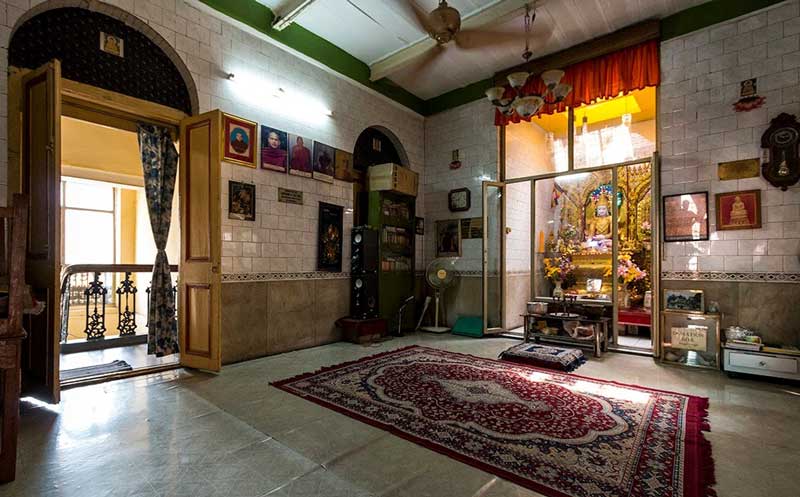
It may sound strange, but it is a fact that like many other shrines of different religions in the City of Calcutta, once the capital of British India, there is also a Burmese (Myanmar) Buddhist temple here, in the centre of the city. The non-descriptive three-storey building housing the holy shrine is located at 10 A, Eden Hospital Road, renamed Dr Lalit Banerjee Sarani, next to the statue of Rana Pratap Singh on horseback, very near to the Central Metro Station. However, apart from the two boards indicating its name, it is tough to find it out from the crowded locality
The unimpressive decaying building, devoid of any architectural significance or decoration, and with the eye-soaring tangled masses of unruly electrical wiring hanging from every conceivable place, does not at all give the impression of a temple. The entrance of the non-descriptive building is heavily congested and almost choked by numerous unauthorized hawkers. A grimy winding staircase leads to the top of the three- storey building, housing the brightly lit hall of the temple, perfumed with incense sticks, far away from the hustle and bustle of the crowded surroundings.
The building of the temple was purchased by a Burmese national, U San Min, in 1928, for the sum of Rs. 47,000. He founded the temple, and named it the Burma Buddhist Dharmasala, Calcutta. In 1932, U San Min handed over the temple to the first presiding monk, Rev. Nandawuntha, and ever since the Burmese have been electing monks and send them to Calcutta to take charge of the temple.

The first floor of the three-storey building serves as a guest house or a dharmasala for the visitors from Myanmar in the city, while the ground floor was rented to different shops and stores to raise sufficient funds for the maintenance of the temple. Unfortunately, the rentals generated by the old tenants today are so meager that it does not cover even the Corporation tax bill, let alone the maintenance of the building.
The temple, located on the top floor is well maintained and meticulously clean. The golden throne on the altar, surrounded by small statues, contains a magnificent idol of Lord Buddha made of marble, with a glowing white face, dressed in golden attire, complete with a typical Burmese golden crown andumbrella. Thealtar is also decorated with flowers, coloured candles, incense sticks, and flashing lights of Chinese origin.
Although mostly unknown to the people of the city, tourists from Myanmar usually visit the temple during the winter, and the temple still accommodates trainee monks.
